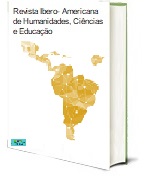USO DE BIOENSAIO COM Allium cepa L. PARA AVALIACÃO DE CITOTOXICIDADE DE Croton urucurana Baill
doi.org/10.29327/217514.6.12-6
Palavras-chave:
Allium cepa L. Citotoxicidade. Croton urucurana Baill.Resumo
Croton urucurana Baill é uma planta medicinal conhecida popularmente como Sangra d’água, pois quando seu tronco é cortado, libera uma seiva resinosa de cor vermelha escura como sangue. A casca e a resina dessa planta são utilizadas como remédio natural por suas propriedades de anti-inflamatórias, antibacterianas, antissépticas e cicatrizantes. Embora, há poucos estudos que comprovam sua eficácia e segurança. O uso de ensaios biológicos para avaliar a bioatividade dos extratos e compostos de plantas foram frequentemente aplicados para identificação e monitoramento de substâncias potencialmente tóxicas. Este estudo tem como objetivo avaliar a citotoxicidade do extrato de resina de planta medicinal C. urucurana por meio de bioensaio com Allium cepa (cebola). As cebolas descascadas foram colocadas em recipiente com água destilada durante 24 horas para estimular crescimentos das raízes. Depois desse período, foram escolhidos bulbos de cebolas saudáveis para o experimento e tratados com seIs diferentes concentrações de resina (25, 50, 100, 250, 500 e 750 ppm). O ensaio foi realizado em 96 horas. As cebolas tratadas com água destilada foram utilizadas como controle. Ao final do ensaio foi mensurado o tamanho das raízes de bulbos, dez amostras para cada tratamento. Os resultados mostraram que os extratos nas doses e tempos de exposição avaliado, foram citotóxico e retardaram os crescimentos radiculares das cebolas. O comprimento das raízes diminuiu com o aumento das concentrações do extrato. As médias do grupo de tratamentos são significativamente diferentes da média do controle (p<0,05), analisados pelo teste de Dunnett’s. As taxas de inibição foram superiores a 50% a 250, 500 e 750 ppm com valores 63, 81 e 86%, respectivamente. Em resumo, a resina causam uma inibição do crescimento radicular do Allium cuja intensidade depende das concentrações aplicadas.
Downloads
Downloads
Publicado
Como Citar
Edição
Seção
Categorias
Licença
Atribuição CC BY

